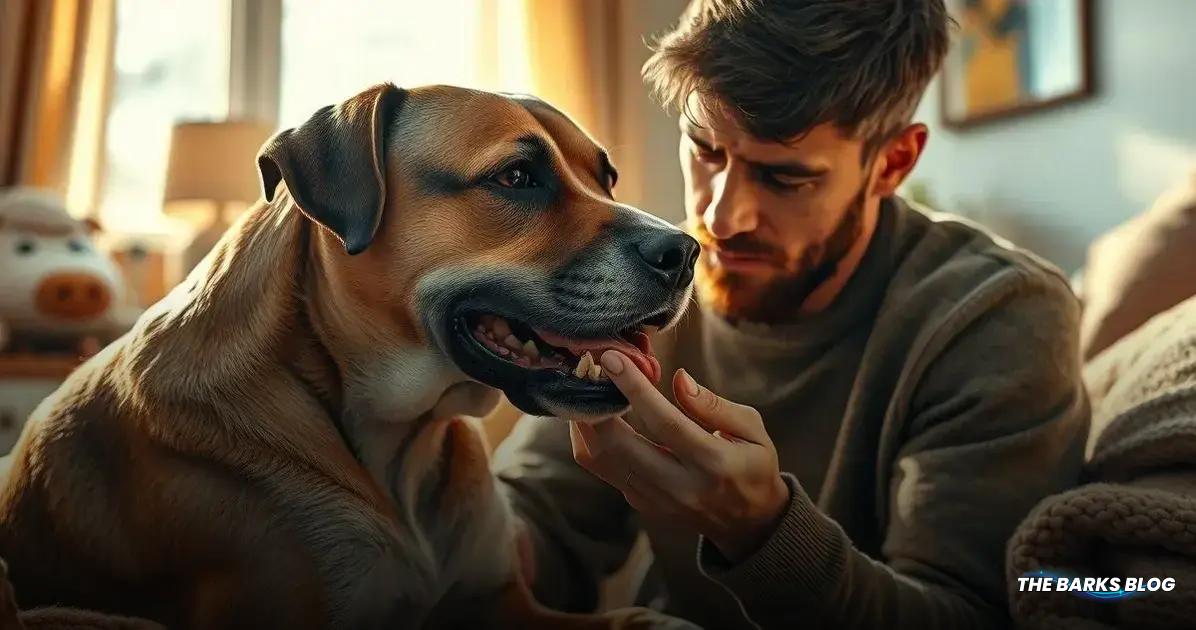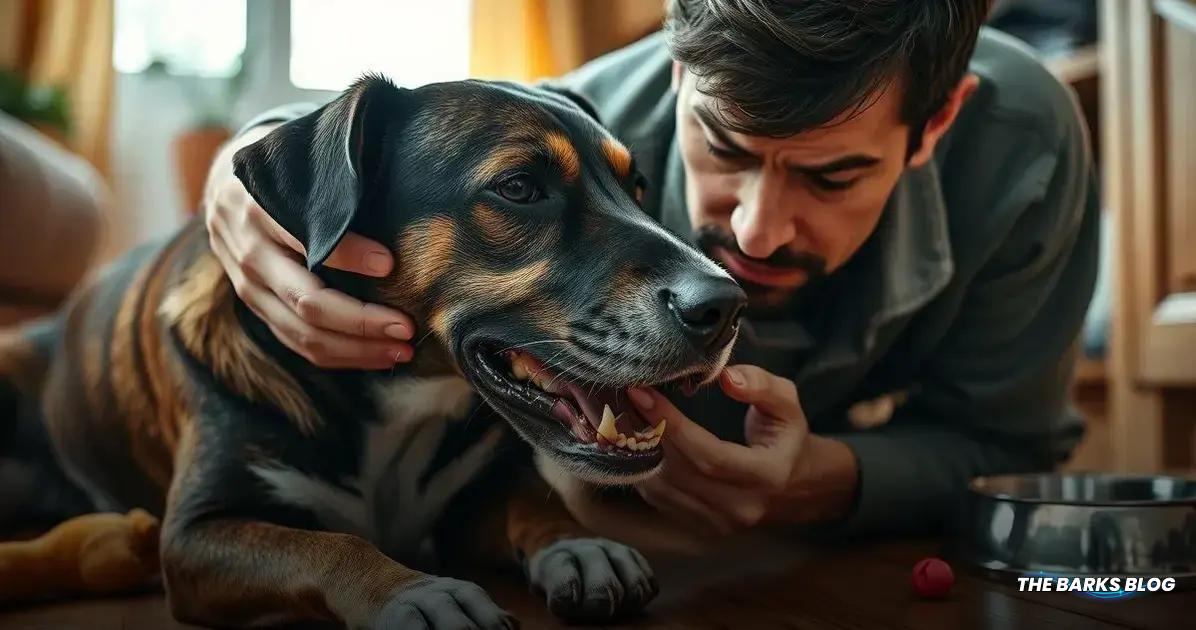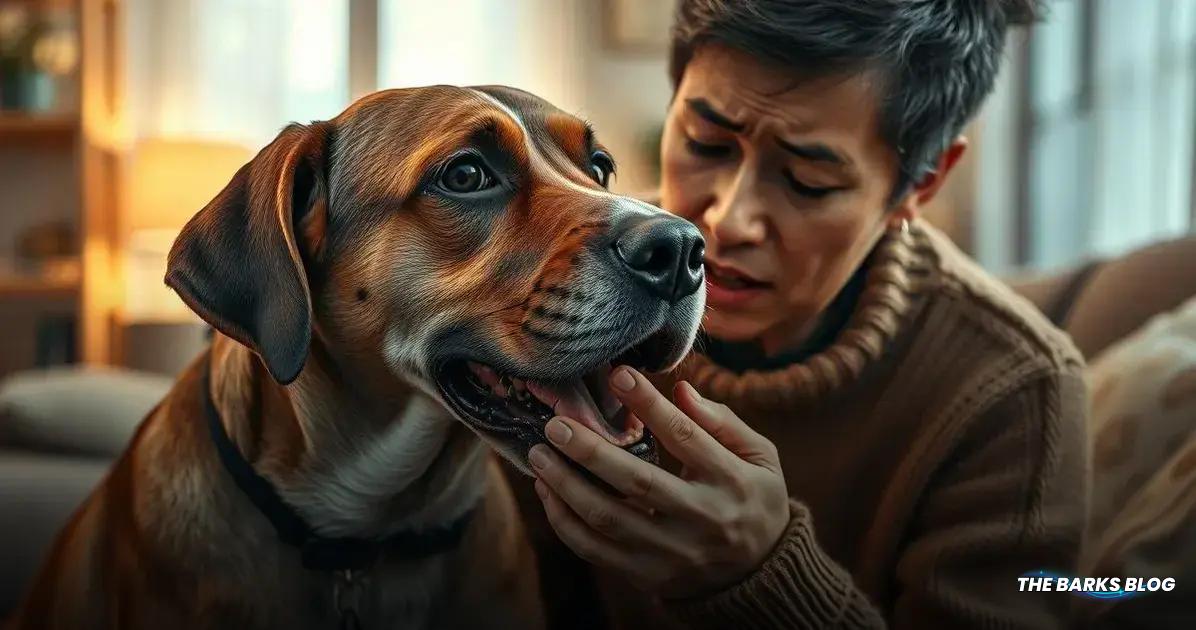Recognizing signs of mouth pain in dogs is crucial for their well-being. Look for symptoms such as reluctance to eat, bad breath, excessive drooling, and pawing at the mouth, which may indicate dental problems. Regular dental care and prompt veterinary consultation are essential to address these issues and maintain your dog’s oral health.
Dogs are masters at hiding pain, making it crucial for pet parents to notice subtle signs of discomfort. This article outlines 11 sneaky signs that could indicate your dog’s mouth is hurting.

Reluctance to Eat
One of the most telling signs of dog mouth pain is a reluctance to eat. If your furry friend suddenly starts avoiding their meals or seems hesitant to chew on their favorite treats, it’s a red flag. Dogs might shy away from hard or crunchy foods that exacerbate their discomfort, leading to noticeable changes in their eating habits.
Signs to watch for include:
- Dropping food while trying to eat.
- Eating slowly or being overly cautious.
- Refusing to eat altogether, which can lead to weight loss.
This change can be alarming, and it’s essential to monitor your dog’s eating patterns closely. A sudden decrease in food intake or noticeable weight loss can indicate underlying oral health issues that require prompt veterinary attention.

Bad Breath
Persistent bad breath in dogs is more than just a nuisance; it can be a significant indicator of oral health problems. If your pooch has developed a foul odor coming from their mouth, it could signal underlying issues such as oral infections or dental disease.
Regular dental exams and professional cleanings by your veterinarian are crucial for diagnosing and treating these conditions. Ignoring bad breath can lead to more serious health issues, including:
- Gingivitis, which can progress to periodontal disease if untreated.
- Abscesses in the gums or teeth.
- Systemic infections that can affect other organs.
If you notice your dog’s breath smelling unusually bad, it’s important to take action. Schedule a veterinary appointment to assess your dog’s dental health and address any potential issues before they escalate.

Drooling
Increased drooling can be a clear sign that your dog is experiencing discomfort or pain in their mouth. While drooling can sometimes occur for other reasons, such as nausea or excitement, it becomes a concern when it’s accompanied by other signs of mouth pain.
Watch for these indicators:
- Excessive salivation that seems out of the ordinary for your dog.
- Drooling while eating or drinking, which may indicate difficulty.
- Drooling that occurs alongside other symptoms, like reluctance to eat or pawing at the mouth.
If your dog is drooling more than usual, it’s essential to get a veterinary diagnosis. This can help determine if the drooling is due to oral pain, foreign objects lodged in the mouth, or other health issues that need attention.

Pawing at the Mouth
If your dog is pawing at their mouth or face, it may indicate discomfort or pain that needs attention. This behavior can be a clear signal that something is bothering them, often related to oral issues such as a toothache or a foreign object stuck in their mouth.
Here are some signs to look for:
- Your dog frequently uses their paws to scratch or rub their mouth.
- They may whine or whimper while pawing, indicating discomfort.
- Pawing can also be accompanied by other symptoms, like reluctance to eat or increased drooling.
If you notice your dog exhibiting this behavior, it’s important to investigate further. Check their mouth for any visible signs of injury, swelling, or foreign objects. If the behavior persists, consult your veterinarian to determine the underlying cause and get appropriate treatment.
Conclusion
Recognizing the signs of mouth pain in dogs is crucial for their overall health and well-being. By being attentive to changes in your dog’s behavior, such as reluctance to eat, bad breath, drooling, or pawing at the mouth, you can take timely action to address potential issues.
Regular dental care and veterinary check-ups play a vital role in maintaining your dog’s oral health and preventing serious complications. If you suspect your dog is in pain, don’t hesitate to seek veterinary advice to ensure they receive the care they need.
FAQ – Frequently Asked Questions about Dog Mouth Pain
What are the common signs that my dog may have mouth pain?
Common signs include reluctance to eat, bad breath, excessive drooling, pawing at the mouth, and behavioral changes like increased irritability.
How can I tell if my dog’s bad breath is serious?
If your dog’s bad breath is persistent and accompanied by other symptoms like drooling or reluctance to eat, it may indicate oral infections or dental disease that require veterinary attention.
What should I do if my dog is drooling excessively?
Excessive drooling can indicate pain or discomfort. Monitor for other symptoms and consult your veterinarian to determine the cause.
Why is my dog pawing at their mouth?
Pawing at the mouth can indicate discomfort, often due to oral issues like a toothache or a foreign object stuck in their mouth.
How often should I take my dog for dental check-ups?
Regular veterinary check-ups should be scheduled at least once a year, but more frequent visits may be necessary for dogs with existing dental issues.
What can I do to maintain my dog’s oral health?
To maintain your dog’s oral health, brush their teeth regularly, provide dental chews, and schedule routine veterinary dental cleanings.




